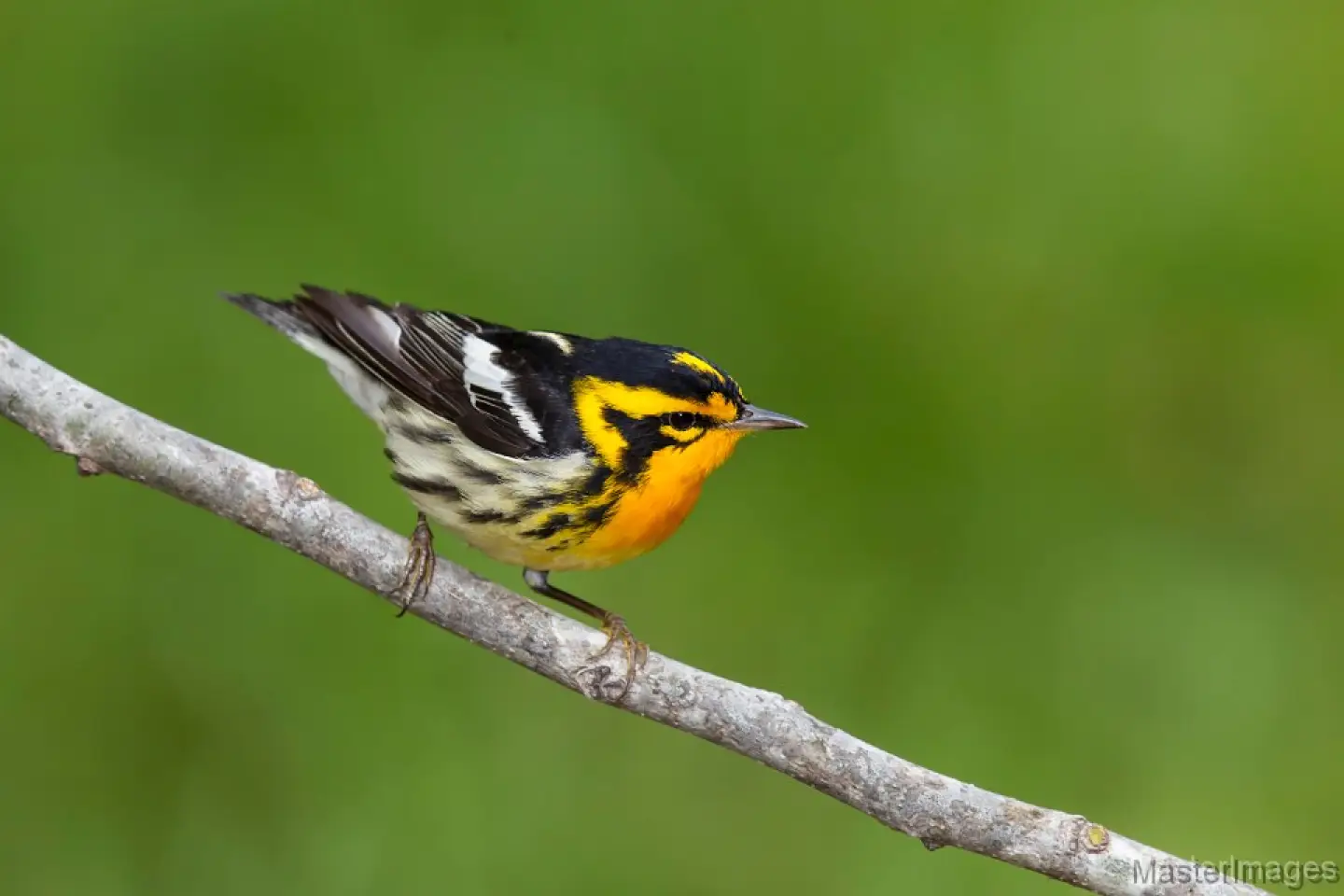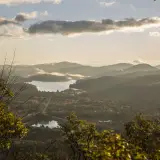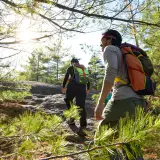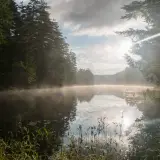A Season of Change
It is always a welcome sign of spring when birds begin to return to the Adirondacks. At this time of year, each day brings new arrivals along with their beautiful songs. Just this morning, an American Robin sang at dawn outside our home. Spring is a fascinating season of change in the avian world. Year-round birds change their behavior as they get ready to nest, many of our winter irruptive species are still here (not quite ready to leave yet), migrants are returning, and some are just passing through on their way north.
Winter Lingerers
Some winter visitors leave in March, while some can be found staying into May before returning north.
Bohemian Waxwing flocks roam around eating fruit well into April before heading off on their long journey to northwestern North America. Fruit trees in Newcomb were a magnet for this species with many flocks observed this past season.
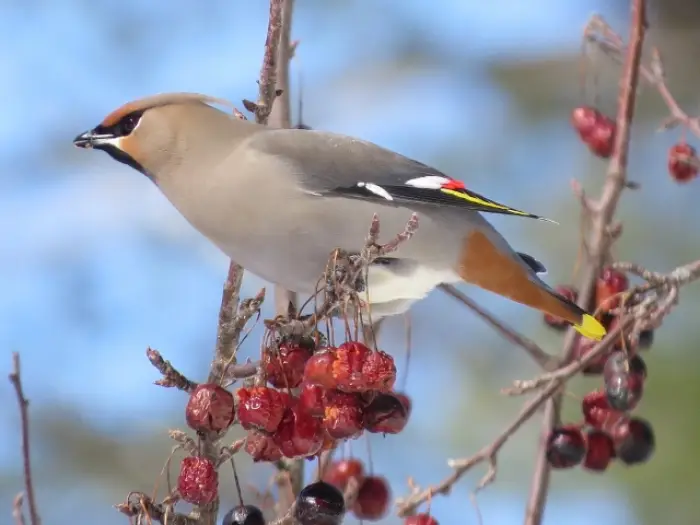
Northern Shrikes, another winter visitor, will also be around well into April and they even begin to sing before heading back to their northern breeding grounds. The Northern Shrike is a predatory songbird that stabs mice through the back of the neck with its sharp bill and then impales them on thorns for storage.
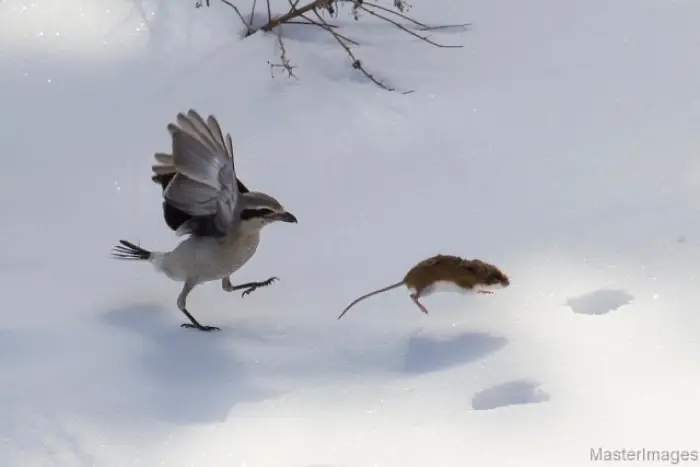
On Their Way North
Some species pass through our area on their way north. American Tree Sparrows are moving through our area now. White-crowned Sparrows will be moving through soon and also sing in migration. I have already observed a couple Golden Eagles as they soared and hunted their way north. It can be exciting to observe waterfowl species as they congregate on any open water.
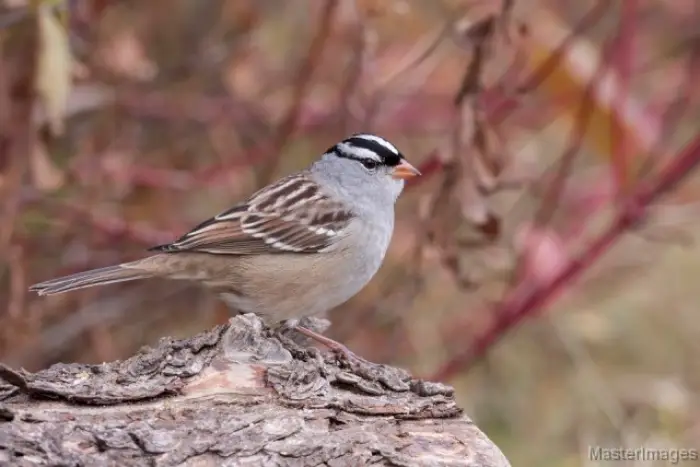
Spring Arrivals
Migrants begin to arrive in March, with most pouring in during April and May.
Northern New York is well known as a place to see large numbers of breeding warbler species. Warblers are colorful – the “butterflies of the bird world” and have lovely songs that fill our woodlands. Palm and Pine Warblers arrive in mid-April and later migrants, such as the Mourning Warbler, arrive in mid-May.
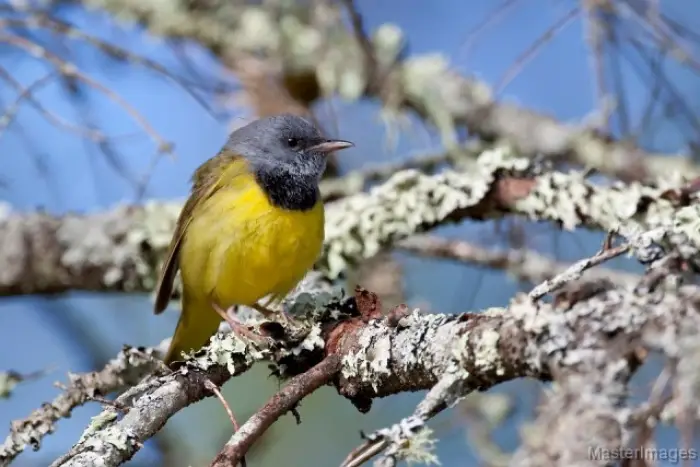
March arrivals include American Woodcock, Red-shouldered Hawk, Northern Saw-whet Owl, Belted Kingfisher, Northern Flicker, Chipping Sparrow, and waterfowl such as Wood and Ring-necked Ducks, Hooded Merganser, and Pied-billed Grebe.
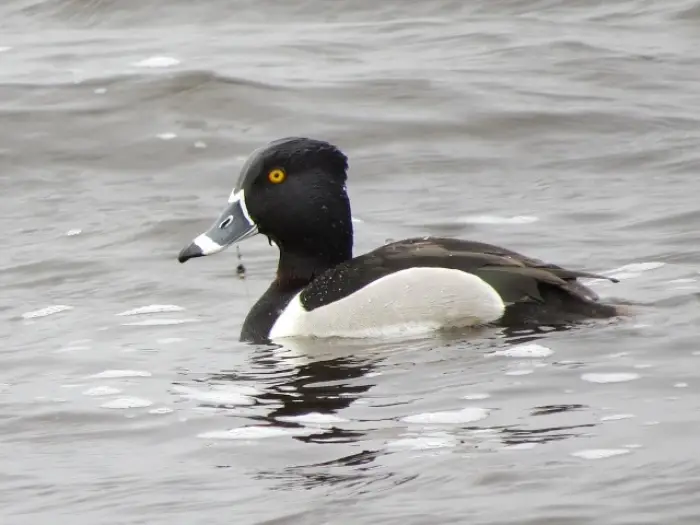
April brings in a bigger wave of migrants that includes Wilson’s Snipe, Common Loon, American Bittern, Great Blue Heron, Osprey, Broad-winged Hawk, Yellow-bellied Sapsucker, Eastern Phoebe, Blue-headed Vireo, Tree and Barn Swallows, Winter Wren, Hermit and Wood Thrushes, Brown Thrasher, Purple Finch, Yellow-rumped Warbler, Swamp Sparrow, White-throated Sparrow (the mascot of the north!), Rusty Blackbird, and many more species.
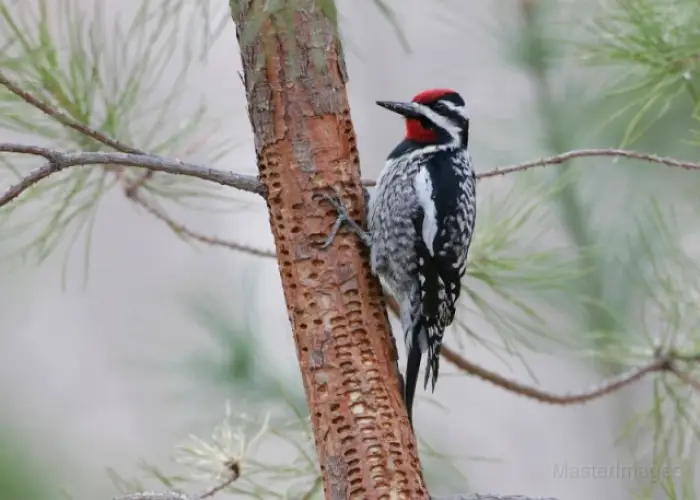
Later spring arrivals fill-in during May and include Chimney Swift, Ruby-throated Hummingbird, Olive-sided, Yellow-bellied, Alder, and Least Flycatchers, Philadelphia and Red-eyed Vireos, Bicknell’s and Swainson’s Thrushes, Canada Warbler, Mourning Warbler, Scarlet Tanager, Lincoln’s Sparrow, and more.
Most species migrate at night. Each morning is exciting as I listen to hear the songs of species that arrived while I was sleeping.
Considered to have the most beautiful song of any North American bird, Hermit Thrushes nest in our woodlands. They return in April and their captivating song is the one that I most look forward to hearing in spring.
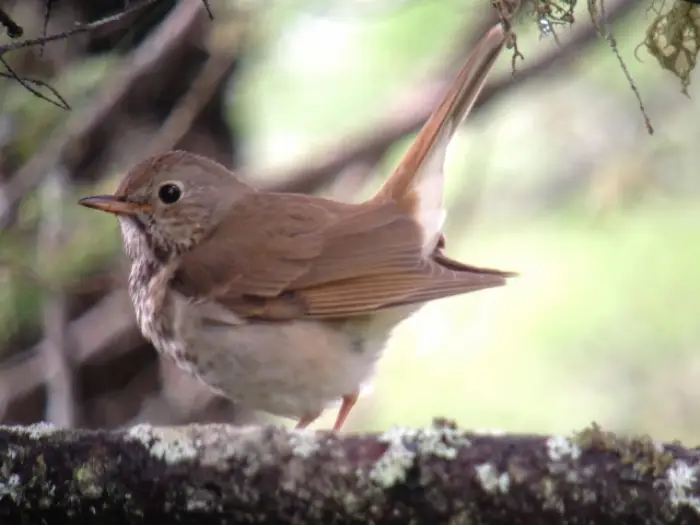
Year-Round Species
Our year-round species have been changing their behavior as spring progresses. Common Ravens began to build nests in late February! Black-capped Chickadees, Brown Creepers, and Golden-crowned Kinglets begin to sing, signaling the seasonal changes to come. Woodpeckers call and drum more. Ruffed Grouse start to display. Gray Jays nest in late winter and their young fledge in late April. Great Horned Owls have young already after their winter nesting season. The landscape fills with song and activity!
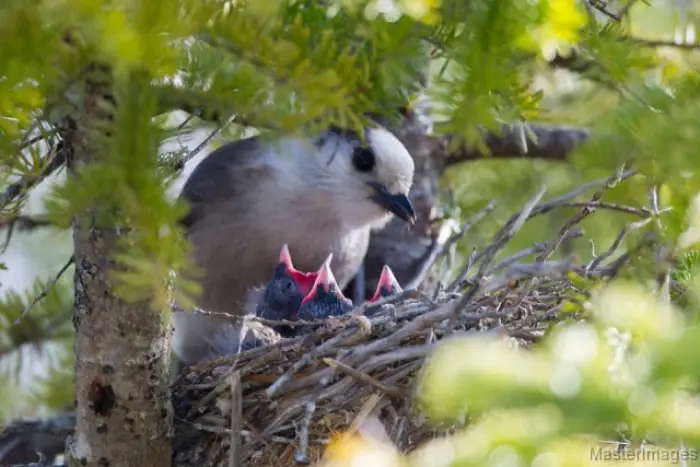
Great Birding Locations in Newcomb and Minerva
Tahawus Road in Newcomb
Tahawus Road is a fairly quiet back road that parallels the Hudson River and great boreal habitat. Black-backed Woodpeckers and Boreal Chickadees can be found year-round. Last year, I found a Rusty Blackbird vocalizing in breeding season by the Hudson River in perfect habitat. This species is steeply declining in population and becoming extremely difficult to find at all in the Adirondacks, so it was thrilling to find the bird last year. In addition to the boreal forest along Tahawus Road, there is also shrubby marshland. Many warbler species nest along the road.
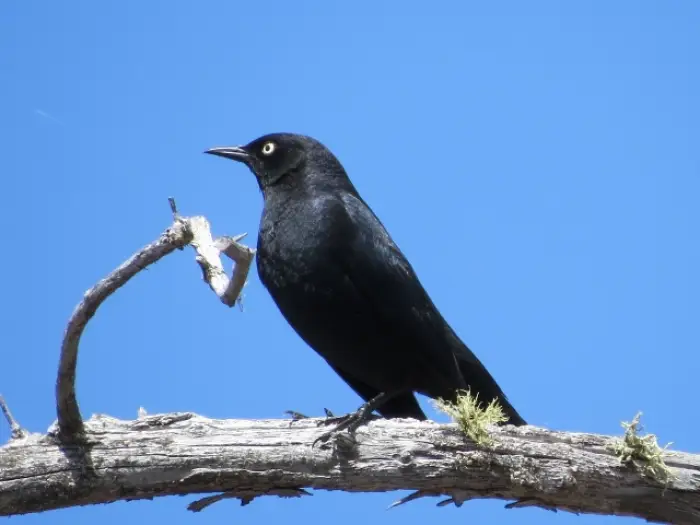
Roosevelt Truck Trail in Minerva
This 2.5-mile long trail runs between the Blue Ridge Road and Route 28N. It is a road-sized trail on mossy ground that traverses boreal habitat. It is one of only a few known nesting locations for the beautiful Cape May Warbler. You can often find this species at the southern end of the trail by Route 28N. They prefer mature spruce-fir forests with little understory. Northern Goshawks are often observed along the trail, and the resident Gray Jays imitate them! A Sharp-shinned Hawk has been nesting toward the north end of the trail each year. I’ve found record numbers of Black-backed Woodpeckers and Boreal Chickadees along this trail. There are two different handicap-accessible camping areas midway on the trail with picnic tables and outhouses.
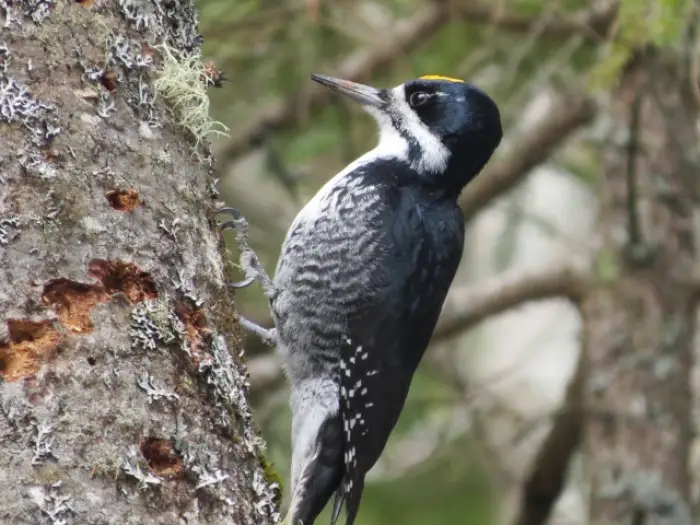
Railroad Bed in Minerva
Head south along the railroad bed in Minerva where it intersects Route 28N. Olive-sided Flycatchers can be found in this area in beaver created wetlands. There is a large marsh on both sides of the tracks, a pond, and boreal forest, for a wide variety of bird species. Last year, we found a Black-billed Cuckoo singing in the trees at the edge of the marsh.
Marsh along Route 28N in Newcomb
About .75 of a mile east of the Blue Ridge Road and Route 28N intersection, there is boreal marsh on both sides of the road. Alder Flycatchers and Common Yellowthroats nest here. Last year, a Black-backed Woodpecker nested at the edge of the road. Gray Jays and Boreal Chickadees are also frequently observed.
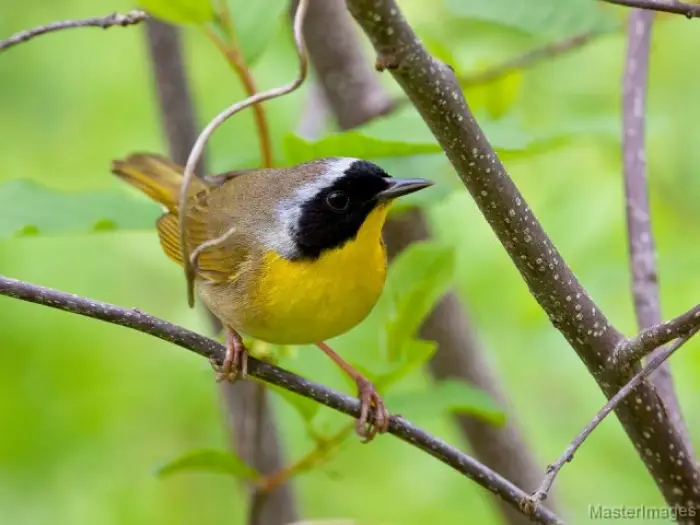
First mile of the Vanderwhacker Mountain Trail in Minerva
If you have a vehicle that can drive the rough road to the Vanderwhacker Mountain Trail parking area, the first mile is terrific for birding! The trail passes through mixed forest habitat and by two different beaver-created marshes for a wide variety of bird species including Olive-sided Flycatchers. Many lovely Canada Warblers are found nesting along the trail also. After the first mile, the trail begins a steep ascent to the summit which has a fire-tower. Birders usually turn around after a mile! If you do venture to the summit, Yellow-bellied Flycatchers and Blackpoll Warblers can be found.
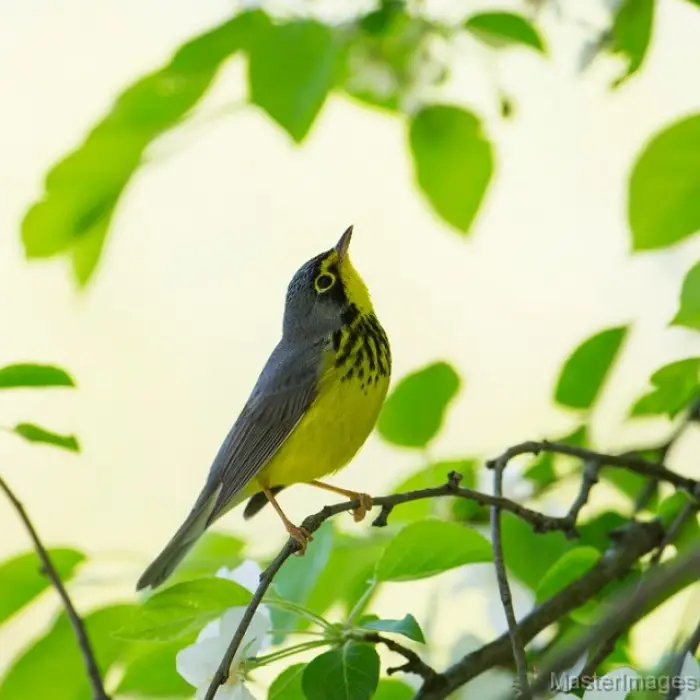
Boreas River Bridge in Minerva
There is a little drive on the east side of the Boreas River Bridge to park a car. I often find Black-backed Woodpeckers and Boreal Chickadees on both sides of the river at this location. Swallow species fly around the bridge and many warbler species can be found.
Hewitt Eddy Trail in Minerva
The Hewitt Eddy Trail connects to the Boreas River Trail, but I prefer the Hewitt Eddy Trail since it is quieter. The Boreas River Trail parallels the Boreas River making it difficult to hear birds. Both trails traverse boreal forest habitat with great birds!
Cheney Pond Trail to Lester Flow in Minerva
The Cheney Pond Trail to the Lester Flow Trail is ~ 2.5 miles long and ends at the remains of the Lester Dam. Black-backed Woodpeckers, Gray Jays, and Boreal Chickadees can all be found along this trail in boreal habitat. Common Loons can be observed on Cheney Pond.
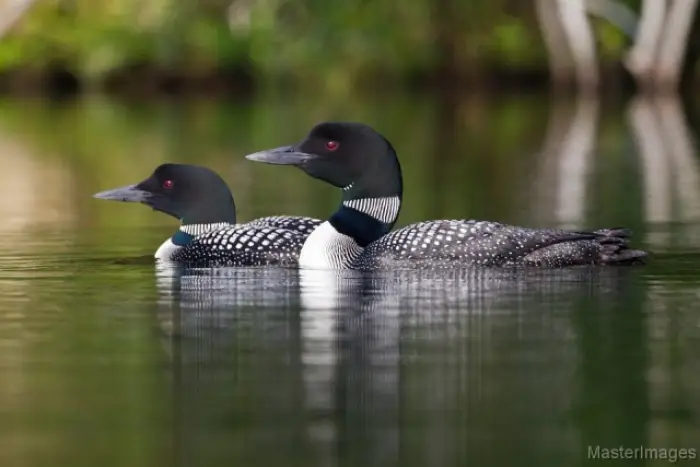
Santanoni Drive in Newcomb
This short, dead-end road runs along the open Newcomb Golf Course and great boreal forest habitat! Eastern Bluebirds nest on the golf course and Black-backed Woodpeckers and Boreal Chickadees can be found in the boreal forest between holes and along the Hudson River found at the end of the road.
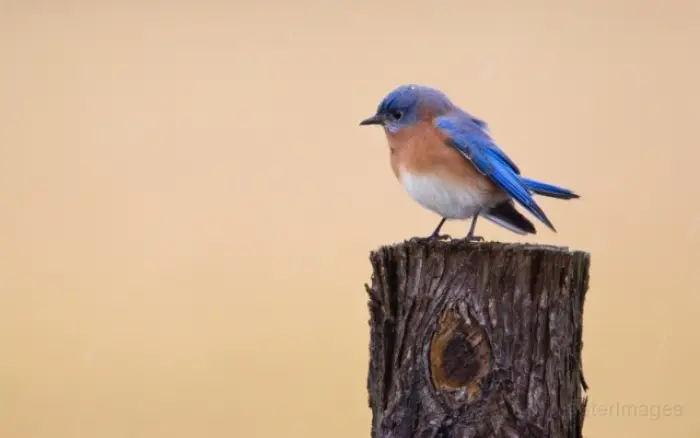
Adirondack Interpretive Center (AIC) in Newcomb
Many miles of well-maintained trails can be found at the Adirondack Interpretive Center. The scenic trails pass through mixed forest, lakes, and brooks with Common Loons, Hermit Thrushes, Winter Wrens, many warbler species, Swamp Sparrows and more.
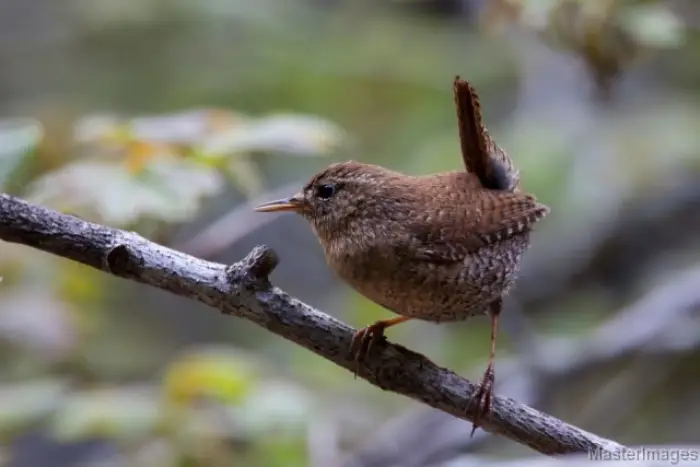
Stay tuned as more areas open to the public, including the newly acquired Boreas Ponds Tract, and hiking and canoe routes that just opened to the public along Tahawus Road! Boreal birding is fantastic in this region and there are wonderful places to stay and dine during your visit.
